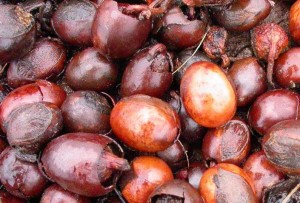We recently came across this Q&A from the American Academy of Allergy Asthma and Immunology, concerning almond oil in skincare products — and the associated risk of an allergic reaction — possibly even anaphylaxis.
The perceived wisdom with regard to nut oils is that they are generally filtered of their solids — and hence their allergenic proteins — and so shouldn’t prove a problem for those with nut allergies. Applying to the skin is clearly less dangerous than eating it, too.
As the Q&A makes clear, nut allergens can be present in nut oils — albeit the paper quoted is the only one the respondents could find. They couldn’t find a case study of almond anaphylaxis via the cutaneous route, either — but there’s a first time for everything — and surely the risk on broken skin (through shaving?) is greater. Why would anyone really want to take the risk?
These days, we don’t think there’s any need to take a risk, even for those who strictly prefer natural skincare, and like the AAAAI, think it would be prudent to avoid the risk. Our ever-growing directory of skincare ranges free of certain food allergens lists a number of nut and peanut-free brands, and we’ll be updating the list very shortly — as soon as yet more brands confirm to us what their entire product suite is free-from.
The shea factor
Curiously, the AAAAI Q&A also mentions the shea nut. I say curiously, because last month we received an email from an American reader who told us that she had shea nut allergy, and was concerned that some of the brands listed as nut-free in our directory contained it in the form of butter.
Shea butter is used widely in the cosmetics industry, but it seems to have extremely low allergic potential.
This is obviously good news, but all this did make us think about the potential for confusion. Michelle has blogged previously about the range of ‘nuts’ which either aren’t nuts or have never or only exceptionally triggered an allergic reaction, but which must still be labelled as nuts in the US.
When it comes to food, we do have a definition of what a nut — ie a ‘tree nut’ — is, and these are set out in EU law and found in Annex II of the EU FIR 1169/2011 legislation. These are clearly different to American definitions. We have no definition of ‘nut free’ yet — because no ‘threshold’ levels have yet been agreed, as they have been for ‘gluten free’, which now means 20mg per kg or less of gluten. (Each nut will need its own threshold level; the whole subject is a minefield.)
As far as skincare is concerned, we at Skins Matter have essentially ‘borrowed’ the food allergen definitions of tree nuts. These don’t include shea — nor coconut, incidentally — and this is why we list shea-containing products in our directory under ‘NF’. But that’s just us, and is not ‘official’ in any way. Others see it differently, as we learned when our American reader got in touch.
Allergies are different from country to country. A problem in one country will not be a problem in another. It varies according to how much an ingredient or chemical is used (either in cooking or skincare), and on the local environment (eg different pollens in different climates), and on genetics and ethnic background, and on any number of other factors.
As allergies increase and as labelling gets ever more complex, perhaps we may start to realise that international standardisation is eventually going to be needed. We really want to see ‘nut free’ (and ‘dairy free’ and ‘gluten free’) messaging on skincare, but in an ideal world we want those statements to mean something defined — and to mean so everywhere.
And if we don’t even have agreement over the definition of a ‘nut’, can we ever really safely move towards a workable definition for ‘nut free’?

Interesting blog post.
A few years I used to work in the technical department for a cosmetics manufacturer.
Our safety assessor at the time told me there have never been any known cases of nut allergies from skincare ever, which surprised me, as you would think it would be a common risk given the concern over nut usage in skincare. Interestingly, coconuts aren’t botanically nuts either, they’re drupes! (Like Olives).
(But Coconut allergy does exist, it’s just different from a nut allergy!).
Thanks, Wren – glad you liked it. There have been cases of nut allergies to skincare – and initial sensitisation too. It may be rarer these days – maybe fewer are using nut oils? people taking more care? – but there’s no doubt they happen. The Anaphylaxis Campaign warn about it. Actually, maybe the oils are more refined these days, and that’s why it’s rare? Coconut allergy is very rare though – not sure we’ve come across that in the literature. But no doubt it’s ‘out there’ somewhere … Thanks for stopping by!
On a slightly different angle. I am on a dairy free diet for neurological reasons. I am now wondering whether I should stop using the soap I normally use which is very gentle but contains goats milk. Or would it only matter if I used it on skin that had cuts or abrasions on it? I do not know how much the skin absorbs/breaks down the milk proteins.
I don’t know enough about the size / absorbability of milk proteins to be able to advise. It depends on the strength of your reaction (if any) to them. Can only really advise to speak with your neurologist or a dermatologist. There are lots of DF soaps out there, should you need them.